| Zeitschrift Umělec 2000/4 >> An Interview with Chen Zhen By Hans Ulrich Obrist | Übersicht aller Ausgaben | ||||||||||||
|
|||||||||||||
An Interview with Chen Zhen By Hans Ulrich ObristZeitschrift Umělec 2000/401.04.2000 China | en cs |
|||||||||||||
|
Hans Ulrich Obrist: Could you say something about your big project of becoming a doctor? As you said, it is a journey you cannot stop after doing one exhibition or a few exhibitions…
Chen Zhen: I’ve considered myself a patient for the past twenty years. In China we say that an old patient can become a good doctor without having to study medicine. In relation to my own disease I think I’m good enough to try and become a doctor. This project takes us to the question on how to profit in art from all the aspects of life, and my own experiences. This means that I can no longer consciously separate life from art. I take medicine every morning, and I appreciate this act, which enables me to keep my head calm, to be less proud. Twenty years ago it wouldn’t have occurred to me that being sick could be important to me, whether in practice or in thinking. Now as I develop the project of becoming a doctor, I ask myself why I shouldn’t turn the process of recovery into a creative process. I’ll use all the trips to doctors, pseudo-doctors, healers, witches, and so on. I am going to be cured as an artistic process. This project is a synthesis of my journey, my way of making art, of living. Now, a question I ask at every interview, which concerns unrealized projects. Could you tell me something about your unrealized utopian projects? An unrealized project is a dream of realization in the future. It is definitely to become a doctor. When there is a sign on the house where my studio is in Paris that says: Docteur Chen Zhen. A lot is now being said about transculturalism, ”between” space, time between cultures. I would also like to talk about interdisciplinary issues. The art world has become an isolated environment, just as in the world of architecture, and the world of medicine. It is interesting to observe that medicine is the biggest victim of this isolation. A doctor makes a diagnosis of an individual symptom and doesn’t care about the rest. A doctor doesn’t talk about synergy and art has also forgotten about synergy. This is where I see the crucial problem. What do you think about this? How does your own practical activity connect with interdisciplinary work, or, rather, transdisciplinary because interdiscipline suggests the acceptance of borders between disciplines whereas transdiscipline is above that? I believe this to be an important point in relation to life in its current heterogeneous and uncertain state. It isn’t just a question of changes and movement. Uncertainty becomes an eternal questionmark for everybody. What was your first exhibition? It was organized by this company called Hangar 028, which wanted to create a relationship between an artist and a factory. They rented spaces on rue de la Roquette but unfortunately the company dissolved. Since then I’ve been working on large-scale installations but, at the same time, I’m always thinking about urbanism and architecture as a part of the reflection of relationships between people, nature and consumer society. I was just speaking about the medical project and on the Venice Biennale I exhibited work, which turned out to be an example of synergy I had not even anticipate. The viewers’ participation in the work? Yes, it came as a great surprise to me. This is an example of synergy that I didn’t expect. The public played an important role. All of a sudden I realized that the work was not finished without the public’s participation. At least half of the work was done by the audience? Absolutely. The audience helped me discover the meaning of the work. It only confirmed the idea that transdisciplinarity has become a work of art. To make the installation immerse itself into the space, to make the object an instrument, you need the audience’s participation. Doesn’t a performance with the audience’s participation reveal a new potential to us? Can we make an independent video at an exhibition, capturing the audience’s reactions? This is a new series of questions concerning the issue of interdisciplinarity. Then we can say it is interdisciplinarity in relation to the artist and also in relation to the audience. Yes. It is in the relationship to the potential of the audience who interpret what they see and touch. At the installation in Tel Aviv, people destroyed all the wooden sticks; they were made of oak. The reason was that some of them were police clubs. The audience interprets things for themselves. Interdisciplinarity is not various categories connected together. It is about finding synergy that radiates a certain effect. What installations are you currently working on after the ones in Tel Aviv and the Venice Biennale? It is important for me to show one or two big installations a year, where it’s moveable or not. I’m working on a new project in Albi, in a lesser-known center called Cimaise & Portique. It’s an incredible place because the space in the center is flooded with water. When I was there, the space was literally under water. Michel Francoise’s installation was floating and the water pushed to the door. I admired the violence, the power of nature and the idea of art that purifies. I’m going to make a big installation there, which I call Bateau-Lavoir. It will be comprise of eleven beds representing the number of bodily organs; the beds will be transformed into big metal pools. Water pours into each of the beds; the whole work is like a system of cleansing using water curtains. Another exhibition will take place in Gallerie Civica d’Art Moderna e Contemporanea and it’s called Homage to Black Magic. I consider black magic an unofficial, irrational ”underground force” and ”energy” above all, which is always defeated by white magic. It’s just like an artist’s status. I’m exploring the status of the artist as someone unofficial, always a bit of an outlaw. Another exhibition along the same line will be in Zagreb and it will be called Six Springs. At first the title reflected the idea of exploring the six phases of human life and behavior in relation to Zagreb, the Balkans, and the cradle of conflicts without having to go back to the installation in Tel Aviv. This leads to another medium that you’re using—web pages. Upon your return to Shanghai, you made web pages that are part of the work on urbanism of Shanghai. Could you say something about your return to Shanghai? I came back to Shanghai in 1993 for the first time after eight years. Were you born in Shanghai? Yes. It’s an exceptional city. It’s a huge laboratory because it is a city of immigrants. It doesn’t have a long history, I think something like six or seven hundred years. My parents don’t come from Shanghai; neither do the parents of my wife Xu Min. All of the inhabitants are immigrants from various parts of China, and they live in the city like it’s in a different continent, separated from the rest of China. Like a diaspora. Yes. A diaspora is a place where people meet. That’s why I think that Shanghai is more similar to metropolises like Paris or London. My project in Shanghai is a big one. Everytime I go back there, I would like to continue in my social research and exploration until the end of my life, just like in my project of becoming a doctor. That means you would have to become an urbanist: talking about the multiplication of roles. Yes, that’s right. Perhaps people didn’t know this kind of work, projects that are quite ambitious, but they develop in the long run. We can also talk about slowness because it has two different interpretations. Either you stretch a moment, slowing it down, or you collect lots of short moments that have one common denominator. Slowing down is a question of intensity, deepness. It’s not a question of stopping everything so that we can do just one thing. Slowness is a profound process for me, an act of deepening in time. The urbanist project is based on a study that I did for Paris, for the Left Bank and which was quite well received. It concerned a question on how to do architecture today in relation to contemporary art. It was asking about relations between art and architecture. In Shanghai, everything is moving and changing every week. This city has no clue where it’s going. There is no urbanism there or some kind of long-term strategy of development. This unique feature is common to all Asian metropolises. Total chaos. The big thing there is to catch time. And when you want to catch time, how do you look back on the process of catching it itself? This might be the starting point of energy. I’m interested in observing the mutations, developments, and changes of cities such as Shanghai like continuous social research. So you’re going back regularly and document it? It’s part of the research, I’m taking down notes, taking every possible photograph, and now I found ten other media, which I use to record the social research (drawings, video camera, meeting people...). Documenting a city like Shanghai must be multidisciplinary to be successful. Some of my friends have important social statuses. They are directors, and so on. It’s great to speak with them about these things. Every time I go back to Shanghai, I will continue doing this, but at this moment I don’t know what will come out of it. The process itself is important. This is a very Buddhist thought, isn’t it? Buddha said: ”We don’t know whether today will be more or less important than tomorrow but what we know is that tomorrow will be different.” In the core of Buddhism is a thought of phase after phase, moment after moment, accumulation of all steps, all energies, everyday work. Transcribed by Alexandro Pollazon, translated by Vladan Šír.
01.04.2000
Empfohlene Artikel
|
|||||||||||||
|
04.02.2020 10:17
Letošní 50. ročník Art Basel přilákal celkem 93 000 návštěvníků a sběratelů z 80 zemí světa. 290 prémiových galerií představilo umělecká díla od počátku 20. století až po současnost. Hlavní sektor přehlídky, tradičně v prvním patře výstavního prostoru, představil 232 předních galerií z celého světa nabízející umění nejvyšší kvality. Veletrh ukázal vzestupný trend prodeje prostřednictvím galerií jak soukromým sbírkám, tak i institucím. Kromě hlavního veletrhu stály za návštěvu i ty přidružené: Volta, Liste a Photo Basel, k tomu doprovodné programy a výstavy v místních institucích, které kvalitou daleko přesahují hranice města tj. Kunsthalle Basel, Kunstmuseum, Tinguely muzeum nebo Fondation Beyeler.
|







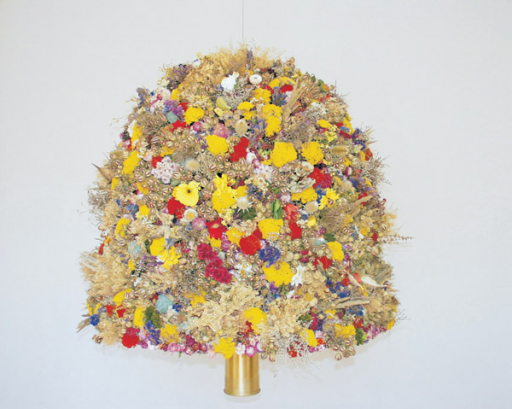














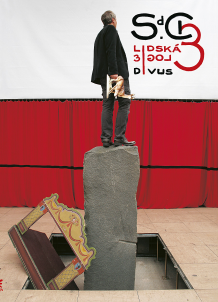




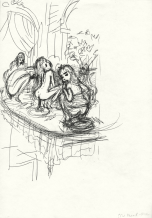
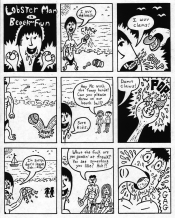
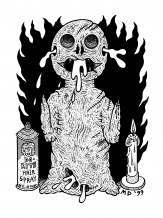
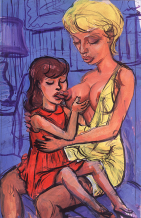


 We Are Rising National Gallery For You! Go to Kyjov by Krásná Lípa no.37.
We Are Rising National Gallery For You! Go to Kyjov by Krásná Lípa no.37.
Kommentar
Der Artikel ist bisher nicht kommentiert wordenNeuen Kommentar einfügen